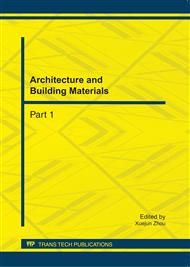p.739
p.745
p.749
p.754
p.758
p.762
p.768
p.773
p.777
Effect of Mineral Admixtures and Water/Binder Ratios on the Resistance to the Chloride Ions Penetration into Concrete
Abstract:
In this study, concrete prisms were made with three mineral admixtures: fly ash, blast furnace slag or silica fume and with three water-to-binder ratios(w/b). Chloride penetration was measured by the rapid chloride permeability test (RCPT)-ASTM C1202, 150-days ponding test and alternate wetting and drying test by cyclic loading with salt solution and oven drying, and the results by the three test methods were compared. This paper discussed the effects of mineral admixtures and w/b on the concrete chloride permeability. Blending concrete with blast furnace slag, fly ash or silica fume was beneficial with regard to the resistance against chloride ion penetration. Concrete specimens with lower w/b showed lower chloride permeability.
Info:
Periodical:
Pages:
758-761
Citation:
Online since:
September 2011
Authors:
Keywords:
Price:
Сopyright:
© 2011 Trans Tech Publications Ltd. All Rights Reserved
Share:
Citation:


